
It was June 23, 1944. Omaha Beach, France. It had been only two weeks after the D-Day bloodshed; the 3rd Armored Division and the man himself had just arrived on the sands, which had just been used as a burial for his own allies and the enemy. Lafayette, also referred to as Pool, could see the destruction of the beach as he could see bodies floating in the water, both enemy and ally. This sight disturbed Lafayette to his core as he realized what he had gotten himself into. He had been an Engineering graduate from Texas College of Arts and Industries before he became a tanker. He had joined the Army in 1942 because he failed to join the Navy, due to his bad eye, which he lied about when he joined the Army.1 His unease grew even more as he heard Thunderbolt fighters zooming into the skies all around him. Upon landing on the beaches, he had been with his tank and his crew consisting of Wilbert Lee Richards as “Baby,” Delbert Jewell Boggs as “Jailbird,” Arthur Reid, and Willis Arthur Oller as “Groundhog.” This crew had been the closest he had to family at this time, as he was their commander for about two years. He knew that despite everything, what mattered was defeating the Germans, because that meant getting himself and his crew back home.2
On June 29, some of the 3rd Armor Division and Lafayette faced death for the first time in their lives during this war. At 0900, there was an order to push forward, and Lafayette took that order, knowing that they were going to face some crazy things, but not in the way that he had expected to. Task Force X was tanks from the H, I, and C companies from the 32nd Armor Division, and they would push their way into the village of La Forge-Bois de Bretel as fast as the infantry could walk and shoot with their guns. Immediately as they advanced, Lafayette could hear the screams of soldiers as they were hit by shrapnel from incoming mortars. Lafayette was exposed to the reality of war. Unseen snipers were making their way into his forces, mortars landing near his tank, killing the infantry that was not inside. German soldiers were hiding in the bushes and camouflaged to strike back without being seen, other than their muzzle flashes. By just halfway through the day, Easy Company had faced four deaths and ten wounded, and F Company faced three more deaths. Lafayette was pushing through at this time and was facing heavy fire when, out of nowhere, anti-tank fire took out the lead tank of H Company to its right. Immediately, a group of Germans rushed out to take advantage of the moment and charged Lafayette and his crew. Lafayette, seeing that they were in the depths of it, shut his commander hatch, and as he did, Hell rained upon him. The Germans were shooting multiple Panzerfausts at him. Lafayette called out, “4 Shot Glanced off.” But sadly, this was when Lafayette learned the harsh horrors of this war despite being in an M4A1 Sherman. A German soldier appeared out of the bushes and shot a Panzerfaust, and this one was filled with so much hate as it landed in the front hull and blew up the inside of the tank. Immediately, he and his crew got out of the tank and ran to the back lines. Upon making it a safe distance, he did a head count on everyone but saw that Oller, Boggs, and Richards were there, but not Private Arthur; he had died. This event alone was when Lafayette decided to focus on keeping his crew alive more than anything, as he viewed his men as brothers, whom he called Pups. And now Lafayette wanted revenge for what the Germans had done to his first Bow gunner. This day alone marked the beginning of what would be the Lafayette Journey.3
It had been a month or less since Lafayette had lost his first crew member. He had already gotten over it, but was still needing a man to replace the missing slot. So, like an answer from the gods, Bertrand James Close appeared as the newest member of his crew. Close had always wanted to be a part of a tank crew since he had stepped foot in a tank months prior for stateside training. So, when he was sent to England in the 3rd Armored Division, he was filled with joy despite knowing the dangers that were a part of that. In March 1944, he had gotten a jump scare he would never forget as his sergeant yelled at him and said, “Close, grab your gear. You’re being transferred.”4 Just like that, he was off to training for the 32nd. By January 25, he had already completed basic training and was put on duty at Fort Meade, where he was moved within two weeks to New York to be sent overseas. By February, he was spending his nineteenth birthday trying not to puke from sea sickness as the ship went from Northern Ireland to the Firth of Clyde. Landing in Scotland, he took another troop train to England, where, by March, he had been ordered to report to the 32nd Armored Regiment at Salisbury Plain near the town of Codford, where he was so happy to be a part of a tank crew, until he learned that all crews were full and would be full for a while. Close was put to work on multiple different duties while at the station. After waiting and longing for the day to be a part of a tank crew, it came. Due to the battle that had killed Private Arthur, many others were also killed. This included Lieutenant Horan and Lieutenant Bryan, who were not killed but badly injured. So, Captain Benz knew that new parts, supplies, and Shermans were being delivered to the 3rd Armored Division. He needed to ensure that the crew was ready to go and fight at maximum performance possible. So, just like that, Private Close was ordered to be assigned to the Lafayette Crew. Close didn’t even know what had happened to the last bow gunner, but he did not care. He was living his dream. Finally, the Lafayette Ace crew was put together.5
On August 29, 1944, Lafayette found himself between Sedan and Charleville in France, which he did not mind as he had become accustomed to his full crew; he knew their every best and worst attribute while inside that tank. They knew how to use his tank properly to accomplish his only major goal: to defeat the Germans. He had been doing that well, as the day before, he destroyed a German train consisting of twenty-one freight cars, ten passenger coaches, two baggage cars, and three flatcars, which were all mounted on a flatbed that also had a Mark IV Panzer Tank. But today was more dangerous. It was the morning of the 29th when Lieutenant Colonel Richardson spent his time getting his Task Force X ready to push towards Paris. Lafayette was in the same situation, but he received some interesting news. The I Company was to serve as a support role; H Company would be the one spearheading. Lafayette was okay with this and took it as it was. Then, after pushing only two miles, both companies faced heavy enemy tank fire. Quickly, the tanks were identified as Panther V at around 2500-3000 yards. Lafayette at this moment knew what he had to do; he ordered his driver to move “In The Mood,”6 which was the nickname Lafayette had given to every tank he commanded, to get on top of the hill ahead of them. Lafayette was able to see and confirmed with his own eyes that it was in fact three Panther Vs. He knew that his M4A1 Sherman was not equipped with enough armor to take on a direct hit from the Panther V. So, Lafayette formed the one plan he knew could work: hit them where their armor was weakest to 76mm APBC. So he told his gunner the range of the nearest Panther, and ordered him to open fire. Money Shot! The round sliced through the air and hit the Panther; however, it was not dead. Lafayette yelled at his gunner to hit it again, and once the second round landed on the Panther V, it burst into a plume of flames. This was remarkable as every M4A1 Sherman, even Lafayette 76mm version, was outgunned and out-armored by German armor like the Panther V.7 Due to the effectiveness of Lafayette’s attack, the other two Panthers retreated behind the closest ridge to them to gain a different firing position on him. Lafayette knew that they would attempt this method, so he ordered Richards to continue advancing. Only a few miles were driven until Richardson reported a stream that the Shermans could not cross. Lafayette understood that he needed to get across, but there was only one bridge nearby, which was probably being watched by German Anti-Tank Guns, but he did not care, as he knew it was the only way to get across while being on time.
As Lafayette came upon the bridge, everyone else in his company and some of Task Force X were doing SBF to ensure that if he was engaged, then they could fire back. Lafayette went over the bridge with no problems at all and radioed back that it was safe. As everyone started to cross the bridge, Lafayette found himself facing another town where he had spotted four German ammunition trucks in the town. Lafayette reacted to that with an order to his gunner to open fire on those trucks. In just under a few minutes, all the trucks were destroyed. Lafayette was so full of energy that he went forward at full speed towards Paris, knowing that his energy would catch any German by surprise; at least that is what he thought. By the time Lafayette and his crew made some distance from the town of Cerny, the three Panthers were ready, waiting for Lafayette to cross over a hill ahead of him to finally take him out. The moment Lafayette went over the hill, the impossible occurred. Immediately, a Panther V shot right at In the Mood and hit the rear right idler, then a second shot hit the rear deck. Lafayette was getting nervous for sure, as one good direct hit and his campaign was over; Lafayette and his crew would be going home in caskets in bits and pieces. This was not the moment to mess up, and despite it being night, he held his ground and told Oller to fire HE directly towards the first Panther V. It was night one moment, and in the next moment, it flashed for a second as the ammo inside the Panther went up in flames. Lafayette and his crew were filled with so much joy, they felt like nothing could beat them at that moment and decided to finish off the Panther V and his crew. Lafayette asked Richardson if he could engage the remaining Germans, and he said yes. The moment In the Mood started moving, a shot in the dark zipped through the sky and almost hit it. Lafayette could not see anything but the muzzle flash in the dark and told his gunner, Oller, to trace where the shot came from the next time it fired. By just the muzzle flash, there were three Panther V in the distance, so Oller knew he needed to make this hit. Oller shot three times. The first two were just warmups to range and set the basis of where he needed to aim exactly to take one out; the third shot was the kill shot. The moment one of the Panthers V was destroyed, the other two retreated, allowing Lafayette and his crew to pull back with Task Force X to a Bivouac to rest. This moment really showed Lafayette his goal of helping to bring the victory of beating the Germans, while bringing as many of his men back home to the states was getting harder and harder as he kept going. At this point, he was relying on luck rather than skill to survive, and this was going to be his end if things went wrong.8
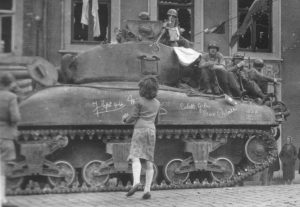
It was now September 1944; Lafayette found himself near Schneidmühle, Germany. Having just faced hundreds of German soldiers and several German tanks, he was ready to finally start hurting them in their very home. He had started in Normandy and had now made it to Germany, losing one of his own crewmen, gaining a new one, and proving himself to be one of the best at killing Germans in a Sherman. His only goal at this point of the war was to bring down those Germans using the only thing he knew best, making his Sherman a menace to those who opposed him. But he did not know that this was going to be his final battle. September 15 was the start of his final days in Germany. At 0530, Lafayette began his advance with his platoon, making it to a location they named the Dragon Teeth, where there were infantrymen pinned down. Command called him and the 3rd Battalion, 32nd AR, to move in and help them out. Lafayette found a passage for his “In the Mood” in the ridge of the second row of “teeth” and charged his tank through a blockade of wood logs, allowing his crew and the other tanks to make passage. After advancing only 300 yards, Lafayette came under heavy fire from anti-tank guns. This ambush resulted in six tanks being damaged in Lafayette platoon before the anti-tank guns could be destroyed. This was a common occurrence for Lafayette’s platoon during their entire advancement. It got to a point where, before midnight, the losses were starting to stack; Lafayette could feel it and see it as he was starting to lose his momentum a little, as 953 soldiers were wounded or killed. But he was not ready to give up; his only goal was to beat the Germans until the war was over, while bringing as many of his crew, whom he called pups, back home. After two days of prepping and patrolling at the bivouac, on the 17th, Lafayette’s platoon, including his crew and four other Shermans, was sent out to the outskirts of Aachen to help the 1st Infantry Division stop a counterattack, and like before, the men were stuck due to a large volley of machine gun fire. Lafayette responded by ordering his crew and the four other Shermans to open fire on the Germans till they fled or died. Once that was dealt with, his crew and the four Shermans left back to a resting zone called the bivouac, where he and his crew sat for the rest of the 18th. It was now the 19th when Lafayette’s goal would be put to the test. At 0630, the 1st Battalion of the 36th Armored Infantry Regiment was told to pass through the 16th Infantry lines and attack Munster Busch. But Colonel Walter Richardson went to Lafayette and told him that his crew alone had been apart of twenty-one enemy attacks and had taken down so many Panthers, Panzers, Jeeps, wagons, anti-tank guns, and Germans that the government was willing to ship him and his boys back home to boost recruitment numbers since they were the tank aces of the war. So, until October, he was going to have to sit around and help on less direct attack missions to ensure that he and his crew lived while still fighting the Germans. As Colonel Richardson put it, “No spearheading today, Pool.”9 At this time, Boggs, the loader, was ordered to stay behind for the upcoming attack to have his hearing and dental work done.10
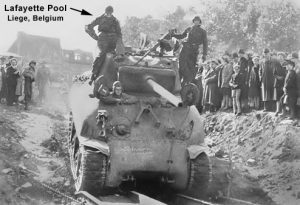
It was 1500 hours. The attack on Münster Busch, Germany, had been ordered; it was not going to be easy. The Germans had heavily fortified it with anti-tank guns, artillery, and mortars, and not to mention the Panthers that were spotted by reconnaissance a few hours before the attack began. During this time, Lafayette and his crew were making their movement into a ravine, where they stopped and planned how they were going to get their heaviest Sherman tank up and down the hill. Then out of nowhere, a jeep sped passed them and braked close to Lafayette’s tank. Out stepped PFC Paul Kenneth King. His first words were “I’m your loader for the day.”11 Lafayette invited him in and welcomed him to his new home–the loader spot. Lafayette had a new “pup” and was already on the move. Lafayette could see the battle ahead far away and was ready for it; he was “primed for action,”12 even saying this about that very moment: “We were the invincible arm of the Lord’s wrath.”13 “We were the battlefield inheritors of the mounted knights of old— Gawain and Galahad and Lancelot. We were the inheritors of their mantle of chivalry, as well. We were fighting a war we saw simply as good against evil.”14
As the leading element of I company advanced, the gunfire from the ravine started spraying everywhere. Lafayette’s tank started to take heavy fire to its right; Lafayette was unsure if the large rounds were from the panthers last spotted or just an 88mm Anti-Tank gun. Either way, he did not care; he knew it was time to fight, but there was a problem. PFC Paul was new and struggled loading the tank gun as fast as Lafayette or the gunner would like, so he told his driver to “Back her up, Baby!”15 But before that could happen, Lafayette’s tank was struck by an 88mm round. Just like that, PFC Paul died, Oller’s left leg got hit, and Lafayette was shot out of the commander’s hatch to the cold, muddy outside world. Lafayette was unable to move. With no commander to guide him, Richards decided that he must get out of there and slammed into reverse and only made it 30 yards until another 88mm hit and somehow still didn’t kill Richard, so he kept reversing till the tank fell into a crater and flipped over multiple times, and yet Richard lived, and so did Close. Lafayette, in his last moments of consciousness, gave himself morphine. Thankfully, Lieutenant Colonel Richardson came and administered help as he called for a medic, and two medics appeared. Upon coming to aid Lafayette and Oller, the last words Lafayette said in that war zone were “Somebody take care of my tank.”16 But there was nothing left of it. His fight was over.17
Lafayette was in the hospital for a very long time. After he was patched up by the two medics who found him after he was ejected from his tank, he was taken to a field hospital, where he was heavily sedated in a “near-comatose” state for 19 days. During that time, the doctors had already started to work on his right leg, but it was not enough, as he needed urgent care. By September 24, he was moved to a hospital in Belgium, where he was diagnosed with double pneumonia caused by fighting in the war in such damp and dangerous conditions. By December 21, he was flown back home to El Paso, Texas. Even then, his right leg was still being worked on as it was severely damaged. By the time he arrived at the hospital, he weighed eighty-five pounds. But this gave time for him to reflect on his actions: had he really completed his goal? Well, these are his words on the accomplishments of himself and his crew: “We had brought death to countless hundreds of our enemies who had sought to end our way of life. We had given the Nazis pure hell from the beaches of Normandy right to Hitler’s front yard.”18 Lafayette believed that he had completed his goal of defeating the Germans successfully, as he may not have been there for the end of the war, he was a critical part of it whenever he was with his crew inside of “In The Mood.”19 All of that bravery is also reflected in the amount of information and books dedicated to his brave, ground-shaking experience as an M4A1 Sherman Commander.20
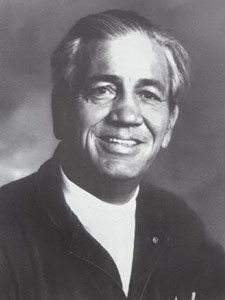
- Stephen L. Moore, Blood and Fury: The World War II Story of Tank Sergeant Lafayette “War Daddy” Pool (Penguin, 2022), 16-17. ↵
- Stephen L. Moore, Blood and Fury: The World War II Story of Tank Sergeant Lafayette “War Daddy” Pool (Penguin, 2022), 9, 21, 22, 49. ↵
- Stephen L. Moore, Blood and Fury: The World War II Story of Tank Sergeant Lafayette “War Daddy” Pool (Penguin, 2022), 60-66. ↵
- Stephen L. Moore, Blood and Fury: The World War II Story of Tank Sergeant Lafayette “War Daddy” Pool (Penguin, 2022), 27. ↵
- Stephen L. Moore, Blood and Fury: The World War II Story of Tank Sergeant Lafayette “War Daddy” Pool (Penguin, 2022), 27-35. ↵
- Stephen L. Moore, Blood and Fury: The World War II Story of Tank Sergeant Lafayette “War Daddy” Pool (Penguin, 2022), 1, 8. ↵
- Belton Y. Cooper, Death Traps: The Survival of an American Armored Division in World War II (Random House Publishing Group, 2007), 176. ↵
- Stephen L. Moore, Blood and Fury: The World War II Story of Tank Sergeant Lafayette “War Daddy” Pool (Penguin, 2022), 145-150. ↵
- Stephen L. Moore, Blood and Fury: The World War II Story of Tank Sergeant Lafayette “War Daddy” Pool (Penguin, 2022), 184. ↵
- Stephen L. Moore, Blood and Fury: The World War II Story of Tank Sergeant Lafayette “War Daddy” Pool (Penguin, 2022), 158-184. ↵
- Stephen L. Moore, Blood and Fury: The World War II Story of Tank Sergeant Lafayette “War Daddy” Pool (Penguin, 2022), 186. ↵
- Stephen L. Moore, Blood and Fury: The World War II Story of Tank Sergeant Lafayette “War Daddy” Pool (Penguin, 2022), 187 ↵
- Stephen L. Moore, Blood and Fury: The World War II Story of Tank Sergeant Lafayette “War Daddy” Pool (Penguin, 2022), 187. ↵
- Stephen L. Moore, Blood and Fury: The World War II Story of Tank Sergeant Lafayette “War Daddy” Pool (Penguin, 2022), 187. ↵
- Stephen L. Moore, Blood and Fury: The World War II Story of Tank Sergeant Lafayette “War Daddy” Pool (Penguin, 2022), 187. ↵
- Stephen L. Moore, Blood and Fury: The World War II Story of Tank Sergeant Lafayette “War Daddy” Pool (Penguin, 2022), 189. ↵
- Stephen L. Moore, Blood and Fury: The World War II Story of Tank Sergeant Lafayette “War Daddy” Pool (Penguin, 2022), 184-190. ↵
- Stephen L. Moore, Blood and Fury: The World War II Story of Tank Sergeant Lafayette “War Daddy” Pool (Penguin, 2022), 193. ↵
- Stephen L. Moore, Blood and Fury: The World War II Story of Tank Sergeant Lafayette “War Daddy” Pool (Penguin, 2022), 1,8. ↵
- Stephen L. Moore, Blood and Fury: The World War II Story of Tank Sergeant Lafayette “War Daddy” Pool (Penguin, 2022), 193-194. ↵
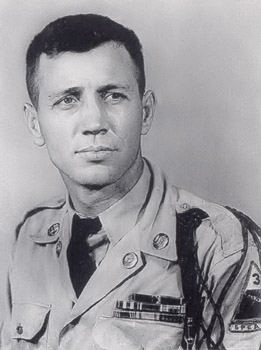

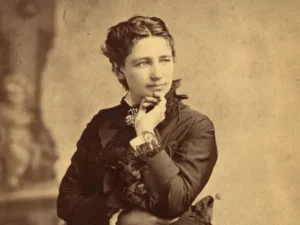
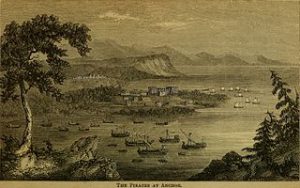
3 comments
Maya Inomata Hernandez
I liked how your article showed the moment when Lafayette realized the real cost of war after losing someone from his crew. It definitely made his experience more personal, and you explained really well how that loss affected his confidence and sense of responsibility.
Martinez
Wow, this was such an inspiring read I didn’t know much about Lafayette Pool before, but your article really brought his story to life, the way you described his bravery and struggles made it feel very real great job Danny
Joaquin b
This was a very informative article. 10 out of 10